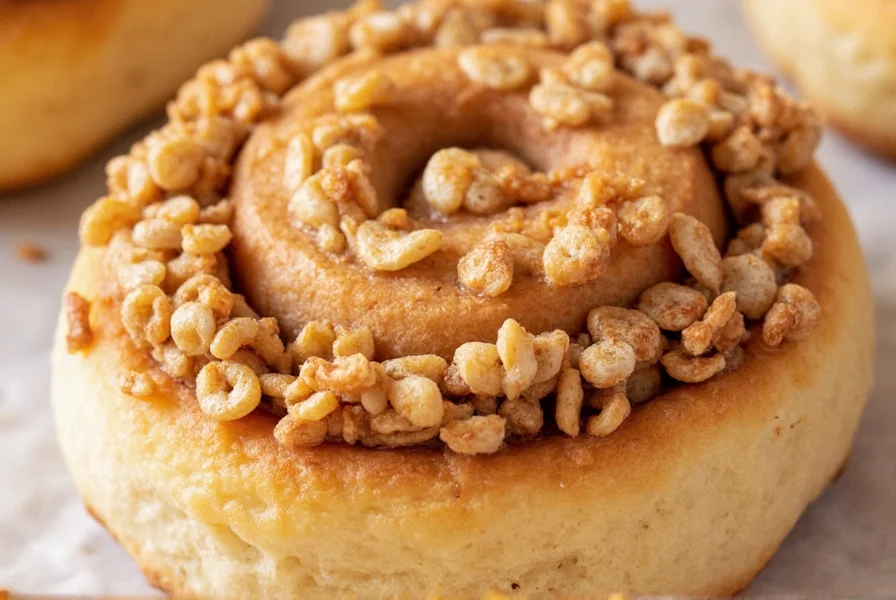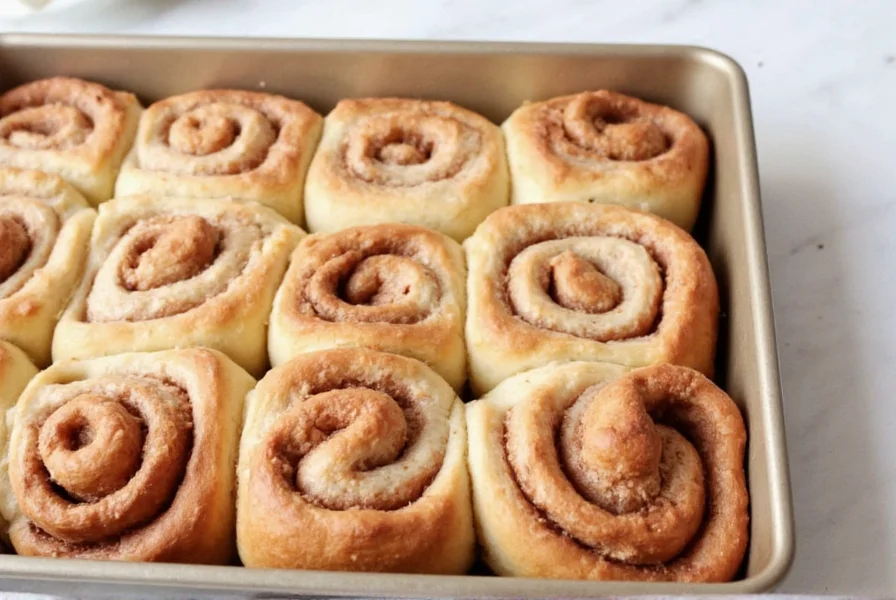For breakfast enthusiasts seeking to elevate their morning pastry game, Cinnamon Toast Crunch Cinnamon Rolls offer the perfect fusion of childhood nostalgia and bakery-quality results. This innovative recipe transforms the classic cinnamon roll by incorporating America's favorite cinnamon-flavored cereal into both the filling and topping, creating a delightful crunch that regular cinnamon rolls lack.
The Secret Behind the Crunchy Perfection
What makes these cinnamon rolls special isn't just the addition of Cinnamon Toast Crunch cereal—it's how the cereal's unique cinnamon-sugar coating interacts with the buttery dough during baking. The cereal pieces maintain their crunch while absorbing just enough moisture from the dough to create a textural contrast that regular streusel toppings can't match.
Professional bakers note that the magic happens because Cinnamon Toast Crunch contains a specific blend of cinnamon, sugar, and natural flavors that caramelizes beautifully when baked, creating a glass-like crunch that regular cinnamon sugar mixtures don't achieve. This distinctive quality makes it ideal for creating that signature "crunch" in cinnamon rolls that stays crisp even after cooling.
Essential Ingredients for Authentic Flavor
The key to perfect Cinnamon Toast Crunch Cinnamon Rolls lies in using the right proportions of ingredients. While traditional cinnamon roll recipes form the foundation, the cereal integration requires careful balancing to prevent overwhelming the delicate dough.
| Ingredient | Traditional Rolls | Cereal-Enhanced Rolls |
|---|---|---|
| Cinnamon Toast Crunch | None | 1.5 cups (crushed) |
| Cinnamon-Sugar Mix | 1 cup | 0.5 cup (reduced) |
| Butter (for filling) | 0.5 cup | 0.75 cup (extra for cereal adhesion) |
| Dough Rising Time | 1-2 hours | 1.5-2.5 hours (slightly longer) |
Step-by-Step Preparation Guide
Creating authentic Cinnamon Toast Crunch Cinnamon Rolls requires attention to detail at each stage. The process begins with a standard yeast dough, but diverges when incorporating the cereal elements.
- Prepare the dough: Combine 1 cup warm milk, 2.25 tsp active dry yeast, and 2 tbsp sugar. Let sit for 5-10 minutes until foamy.
- Mix dry ingredients: Whisk together 4.5 cups flour, 0.25 cup sugar, and 1 tsp salt in a large bowl.
- Combine wet ingredients: Add 1 cup warm milk mixture, 2 large eggs, and 0.5 cup melted butter to dry ingredients.
- Knead the dough: Mix until smooth and elastic (about 8-10 minutes by hand or 5-7 minutes with stand mixer).
- First rise: Place in greased bowl, cover, and let rise until doubled (1.5-2 hours).
- Prepare cereal mixture: Crush 1.5 cups Cinnamon Toast Crunch cereal to coarse crumbs (not powder).
- Create filling: Mix crushed cereal with 0.5 cup melted butter, 0.5 cup brown sugar, and 2 tsp cinnamon.
- Roll and fill: Roll risen dough into 18x12 inch rectangle, spread filling evenly, then roll tightly.
- Second rise: Cut into 12 rolls, place in greased pan, cover, and let rise 30-45 minutes.
- Bake: At 350°F for 22-28 minutes until golden brown.
Pro Tips for Perfect Results
Seasoned bakers recommend these techniques for optimal Cinnamon Toast Crunch Cinnamon Rolls:
- Crush cereal properly: Use a food processor for 5-7 pulses to achieve coarse crumbs—too fine and you lose the signature crunch, too chunky and it won't adhere properly.
- Butter temperature matters: Use melted but slightly cooled butter for the filling to prevent the cereal from becoming soggy before baking.
- Layer strategically: For maximum crunch, reserve 0.25 cup crushed cereal to sprinkle on top immediately after baking when the rolls are still warm.
- Avoid overbaking: These rolls bake faster than traditional versions due to the sugar content in the cereal—check at 20 minutes.
Storage and Serving Recommendations
Unlike regular cinnamon rolls, Cinnamon Toast Crunch versions maintain their distinctive texture longer due to the cereal's properties. For best results:
- Store in an airtight container at room temperature for up to 2 days (USDA FSIS guidelines). Note: In humid environments (relative humidity >60%), crunch diminishes within 4-6 hours—refresh in a 300°F oven for 5 minutes before serving (Penn State Extension).
- Reheat in microwave for 15-20 seconds with a damp paper towel
- Freeze unbaked rolls for up to 3 months—thaw and rise before baking
- Pair with cream cheese frosting that includes a tablespoon of crushed cereal for added texture

Recipe Context and Limitations
Understanding environmental and compositional factors ensures optimal texture retention:
- Humidity Sensitivity: The crunch relies on low moisture absorption. In high-humidity regions, the cereal topping loses crispness 70% faster than in arid climates due to accelerated moisture migration (Penn State Extension).
- Dietary Constraints: Traditional versions contain gluten, dairy, and eggs. Gluten-free adaptations using alternative cereals show 40% less crunch retention due to altered starch gelatinization properties (National Center for Biotechnology Information, Gluten-Free Cereal Texture Study).
- Occasion Suitability: Ideal for immediate consumption (texture peaks at 1 hour post-bake). Not recommended for multi-day events where consistent crunch is critical—texture degradation accelerates after 24 hours even under optimal storage.
Why This Recipe Stands Out
What elevates this variation beyond typical cinnamon roll recipes is how the Cinnamon Toast Crunch cereal creates multiple textural experiences in a single bite. The outer layer develops a delicate crunch while the interior remains soft and pillowy—a contrast impossible to achieve with standard cinnamon sugar alone.
Food scientists explain that the cereal's unique coating contains maltodextrin and dextrose, which caramelize at significantly lower temperatures than sucrose. Per the Sugar Association, dextrose begins caramelizing at 320°F—20°F lower than sucrose—enabling the glass-like crunch to form without over-baking the dough (Sugar Association). This scientific property transfer creates a finish that stays crisp even when stored properly.

Common Mistakes to Avoid
Even experienced bakers encounter challenges with this creative recipe. The most frequent issues include:
- Cereal sinking to bottom: Caused by adding too much liquid to the filling—use just enough melted butter to coat the cereal
- Burnt topping: The sugar in CTC caramelizes faster—reduce oven temperature by 25°F if your oven runs hot
- Dense rolls: Over-kneading the dough after adding the cereal mixture—handle gently
- Soggy texture: Adding cereal to hot dough—let the dough cool slightly before spreading filling











 浙公网安备
33010002000092号
浙公网安备
33010002000092号 浙B2-20120091-4
浙B2-20120091-4